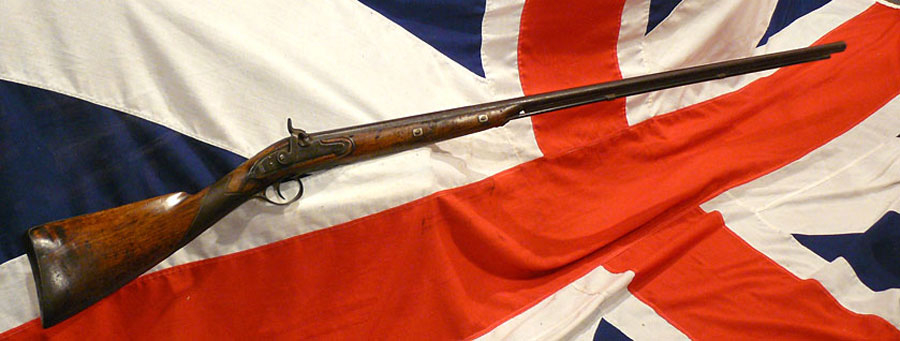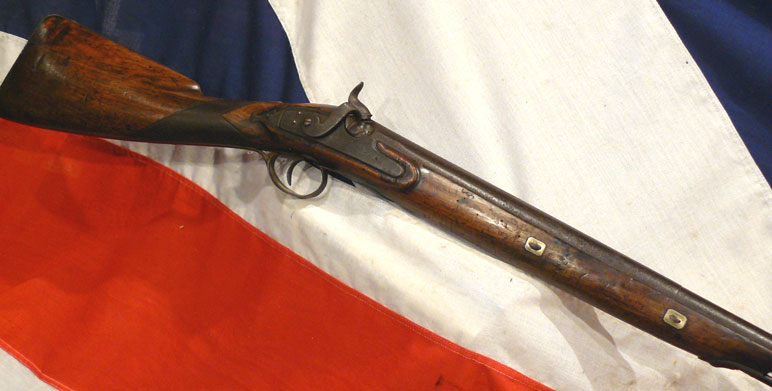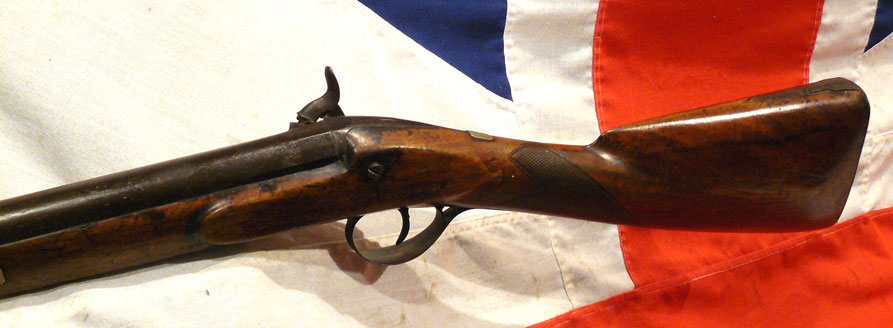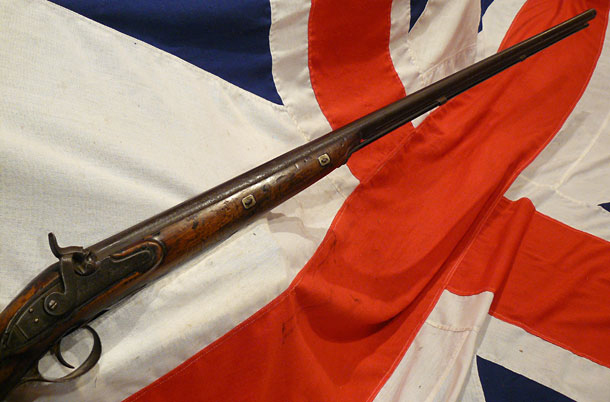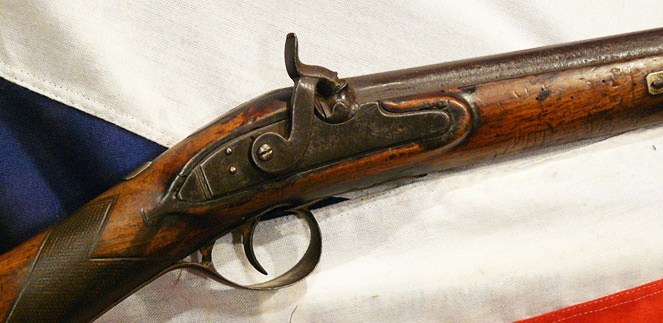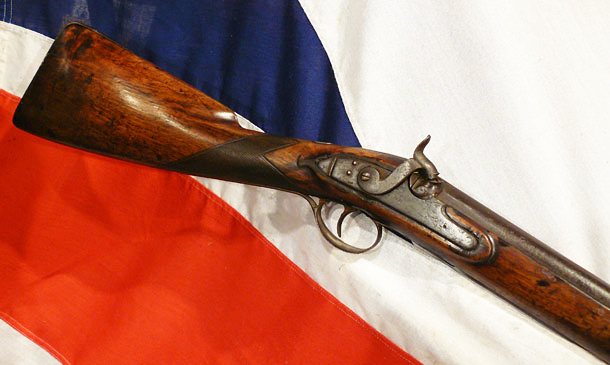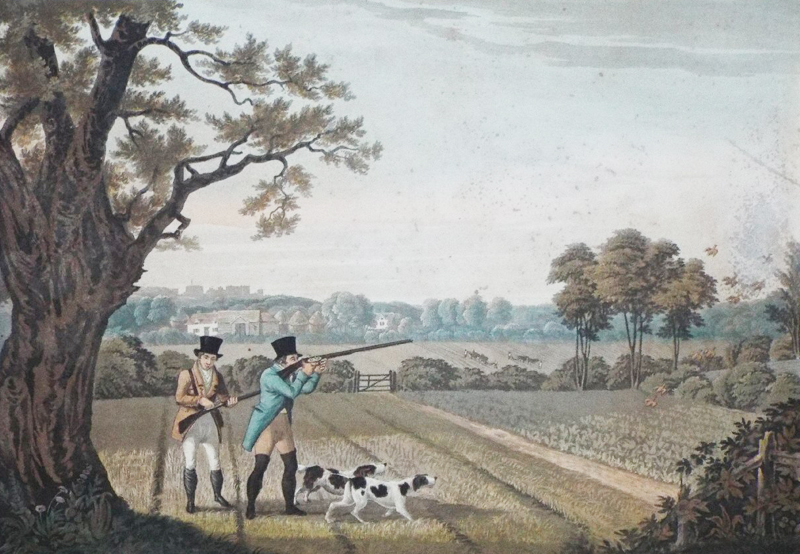A Most Attractive, Original, Late King George IIIrd English Long Barrel Fowling Piece. Absolutely Perfect For Decorative Display
Very long barrel, and good walnut stock. Percussion action.
The earliest smoothbore firearms loaded with shot were the fowling pieces that appeared in 16th-century Europe. In the early 17th century, the barrels were made as long as 6 feet in an attempt to gain maximum accuracy. Hunting has been practised in Britain since prehistoric times; it was a crucial activity of hunter-gatherer societies before the domestication of animals and the dawn of agriculture.
In Britain, hunting with hounds was popular in Celtic Britain before the Romans arrived, using the Agassaei breed. The Romans brought their Castorian and Fulpine hound breeds to England, along with importing the brown hare (the mountain hare is native) and fallow deer as quarry. Wild boar was also hunted.
The earliest known attempt to specifically hunt a fox with hounds was in Norfolk, in the East of England, in 1534, where farmers began chasing down foxes with their dogs as a form of pest control. Packs of hounds were first trained specifically to hunt foxes in the late 17th century, with the oldest such fox hunt likely to be the Bilsdale in Yorkshire. By the end of the 17th century, many organised packs were hunting both hare and fox.
Shotguns were improved during the 18th and 19th centuries and game shooting became more popular. To protect the pheasants for the shooters, gamekeepers culled vermin such as foxes, magpies and birds of prey almost to extirpation in popular areas, and landowners improved their coverts and other habitats for game. Game Laws were relaxed in 1831 which meant anyone could obtain a permit to shoot rabbits, hares, and gamebirds, although shooting and taking away any birds or animals on someone else's land without their permission continued to be the crime of poaching, as it still is.
Hunting was formerly a royal sport, and to an extent shooting still is, with many Kings and Queens being involved in hunting and shooting, including King Edward VII, King George V (who on 18 December 1913 shot over a thousand pheasants out of a total bag of 3937), King George VI and the present day Prince Philip, although Queen Elizabeth II does not shoot. Shooting on the large estates of Scotland has always been a fashionable country sport. This trend is generally attributed to the Victorians, who were inspired by the romantic imagery of the Scottish Highlands.
The modern shotgun evolved principally from a series of 19th-century improvements in gunpowder, cartridges, and guns. The barrel was shortened and lightened, making possible the double-barreled gun, in which two barrels shoot to the same point of aim at normal ranges. The choke bore was introduced to limit the spread of the shot and increase range and accuracy. As with all our antique guns, no license is required as they are all unrestricted antique collectables
Barrel 50.5 inches long, overall 67 inches long. barrel tang screw lacking
Code: 22357
750.00 GBP

